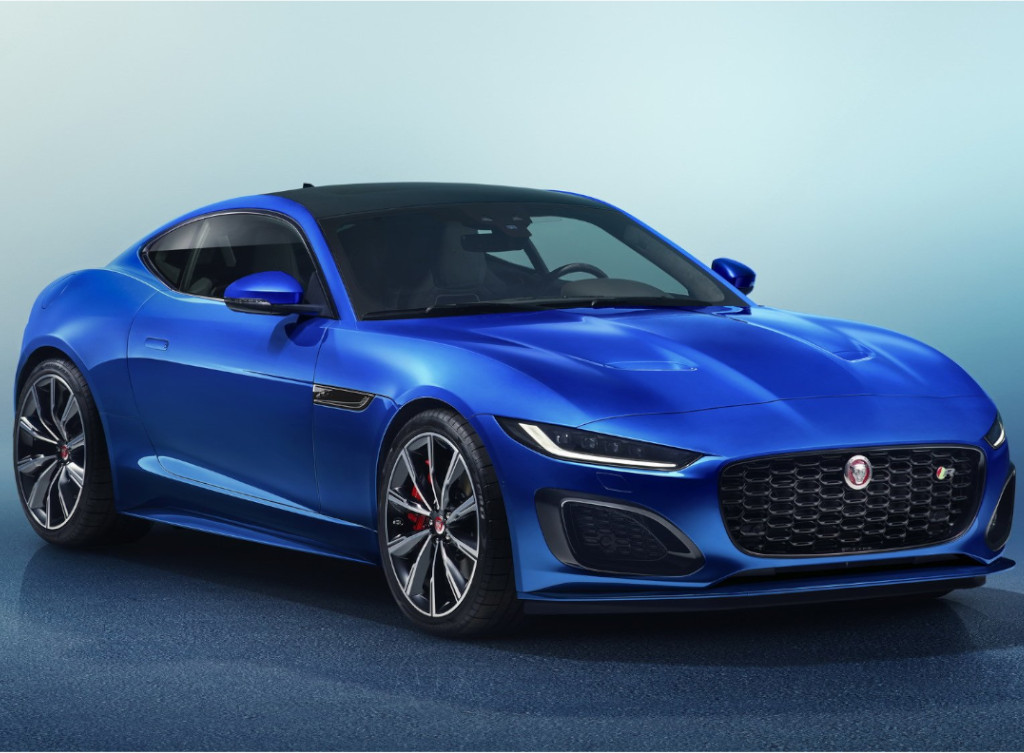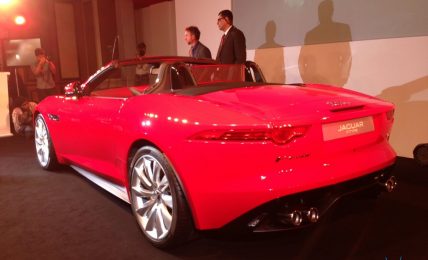The F-Type’s 2.0 engine has good power and torque
Performance – Powering the entry-level F-Type is the same 2.0-litre Ingenium motor that also does duty in a host of other Jaguar and Land Rover cars. However, in this British sports car, it has the maximum output of 300 horses and 400 Nm, enough to take it from 0-100 km/hr in just 5.7 seconds. Meanwhile the SVR which is the top of the line F-Type employs a V8 engine that belts out 575 PS of power and 700 Nm, it’s 2 seconds faster to the ton in comparison, taking just 3.7 seconds, it also has a higher top speed of 322 km/hr (314 km/hr in the convertible), the P300 tops out at 250 km/hr.
This is the first time the F-Type is available with a 4-cylinder engine
The Ingenium is the smallest petrol engine offered by Jaguar
As the above numbers suggest, the F-Type seems like quite the slouch and when you floor the pedal to the metal, you will be a bit disappointed, it doesn’t seem to move and there is no aural drama either. But wait, this is because of the memories of the V8 engined car, in isolation, this engine is quite a charm as it’s not meant for flat out driving but excels when you experience the good in-gear acceleration, the 8-speed ZF gearbox is quick with shifts and let’s you take manual control of things using the steering mounted paddles or the tiptronic function on the gearlever.
The inline-4 engine is good but the V8 is wayyy more fun
This all-aluminium engine is 52 kgs lighter, being smaller in size and using light-weight material, it’s a turbocharged unit (the V8 uses supercharging) and still there is no lag as such lower down (peak torque comes in at a low 1500 RPM and stays there till 4500 RPM), it feels peppy and accelerates in a linear manner all the way to its near 6500 RPM redline. There is good mid-range punch and it’s in the top-end that it feels exhilarating thanks to the smooth flow to of revs to the redline. Being the R Dynamic, it also gets active exhausts, a touch of a button and the exhaust becomes more vocal (some cracks on downshift too!), excellent for a 4-cylinder engine, no where in the league of the V8 though.
The P300 comes with a centre-mounted exhaust
Now if you want to test the acceleration time of the F-Type, left foot on the brake, right foot on the accelerator, build the revs and dynamic launch control will get activated. Once you cross 120 km/hr, the big rear spoiler will deploy, aiding in keeping the car planted although not by much. Jaguar used to offer two V6 engines as well but they seem to be discontinued although the Jaguar India website still lists them. This F-Type’s nearest comparison is the Porsche 718 which produces identical power but lacks 20 Nm of torque in comparison.
The F-Type is excellent around corners with excellent grip
Driving Dynamics – Even with the weight reduction due to the smaller engine, the Jaguar F-Type weighs in at 1500 kgs. The reduced weight does bode well in terms of handling and it takes corners like a charm. It’s not tail happy and you can be liberal with the throttle around the bends, heck, you can even turn off traction control and let the rear step out a bit, without having to worry about pointing in the other direction. That’s also because of the front-engine, rear-wheel drive layout, lending an understeery character to the car. The ground clearance is good enough too, there is no nose lift button, it doesn’t need one either.
The ride quality is stiff yet comfortable
One can never get bored of driving a car like this, it is so good
This F-Type has a softer suspension than the V8 and thus rides quite well for a sports car. It’s still on the stiffer side but compliant enough for most roads. The steering is on the heavier side but offers good feel and the feedback improves significantly as you up the pace. The 50:50 weight distribution works well around the bends as the F-Type feels eager and the chassis is quite communicative too. So while downsizing might have robbed the fun in the straights, it’s still a hoot around the corners.



